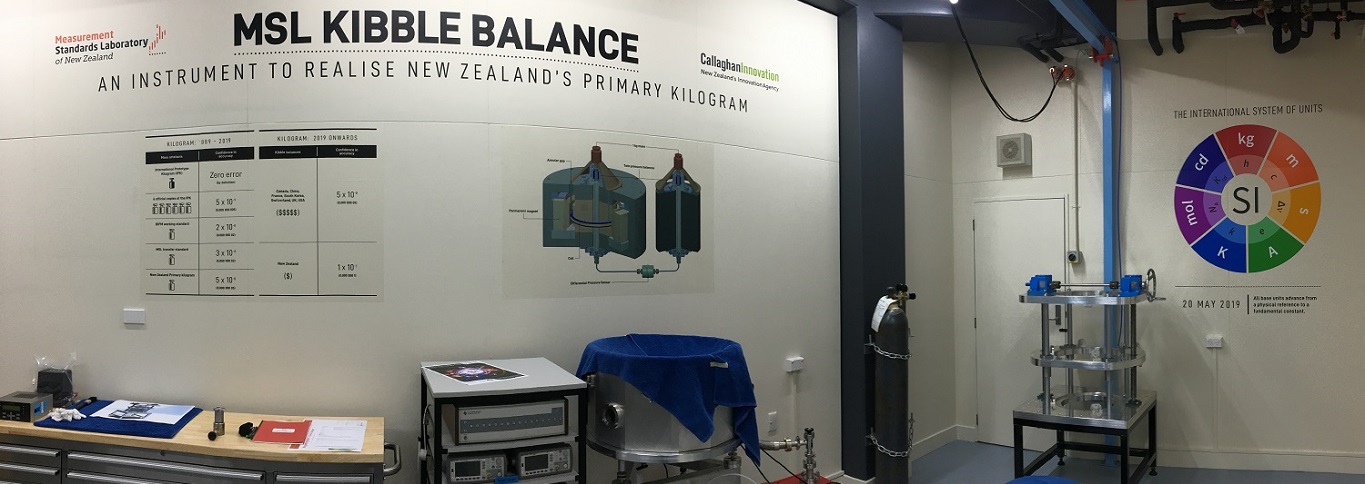The Kiwi Kibble Balance

The Kibble balance is an apparatus that will be used to realise the kilogram after its redefinition in May 2019 based on a fundamental constant – the Planck constant. It compares the gravitational force on a kilogram mass with the electromagnetic force on a current-carrying coil moving in a strong permanent magnetic field. By accurately measuring the induced voltage, current, coil velocity (via position and time), local gravity, and force differences, a Kibble balance can relate a standard weight mass value to the Planck constant with an uncertainty of 20 parts per billion.
MSL is currently in the process of constructing a Kibble balance. There are several Kibble balances around the world, and their designs usually come in the form of beam balances or mass comparators that use pivots. MSL’s Kibble balance is the only one that uses a twin pressure balance with a differential pressure sensor as the force comparator. In essence, the readings from the differential pressure sensor will give information on how well the gravitational and electromagnetic forces are balanced. The advantages of this design are that it is less complex mechanically and its size is relatively small compared to other Kibble balances.
Other key components of our MSL Kibble balance that require careful design and implementation include: the magnet system, magnetic coil, programmable Josephson voltage standard (PJVS), current source, interferometers, vacuum chamber, and air pressure and thermal monitoring systems. At present, these components are being worked on concurrently by scientists and engineers across different MSL standards teams and assembly of the Kibble balance will begin once the components are ready.
We will keep this page updated with progress as each stage is completed and full functionality gets closer.
Read more about the SI Redefinition and the activities we have planned to support this here.

